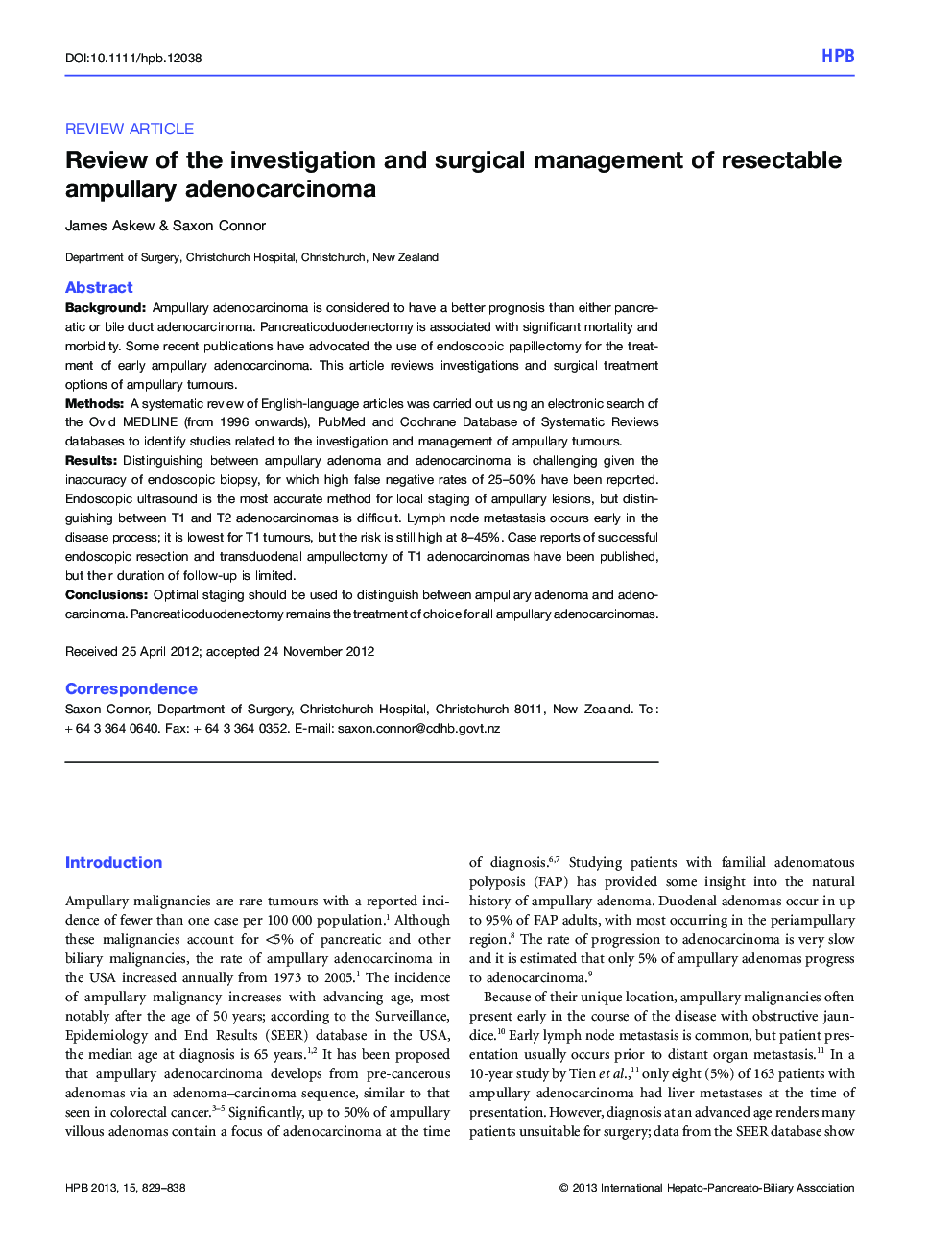| Article ID | Journal | Published Year | Pages | File Type |
|---|---|---|---|---|
| 3269196 | HPB | 2013 | 10 Pages |
BackgroundAmpullary adenocarcinoma is considered to have a better prognosis than either pancreatic or bile duct adenocarcinoma. Pancreaticoduodenectomy is associated with significant mortality and morbidity. Some recent publications have advocated the use of endoscopic papillectomy for the treatment of early ampullary adenocarcinoma. This article reviews investigations and surgical treatment options of ampullary tumours.MethodsA systematic review of English-language articles was carried out using an electronic search of the Ovid MEDLINE (from 1996 onwards), PubMed and Cochrane Database of Systematic Reviews databases to identify studies related to the investigation and management of ampullary tumours.ResultsDistinguishing between ampullary adenoma and adenocarcinoma is challenging given the inaccuracy of endoscopic biopsy, for which high false negative rates of 25–50% have been reported. Endoscopic ultrasound is the most accurate method for local staging of ampullary lesions, but distinguishing between T1 and T2 adenocarcinomas is difficult. Lymph node metastasis occurs early in the disease process; it is lowest for T1 tumours, but the risk is still high at 8–45%. Case reports of successful endoscopic resection and transduodenal ampullectomy of T1 adenocarcinomas have been published, but their duration of follow-up is limited.ConclusionsOptimal staging should be used to distinguish between ampullary adenoma and adenocarcinoma. Pancreaticoduodenectomy remains the treatment of choice for all ampullary adenocarcinomas.
